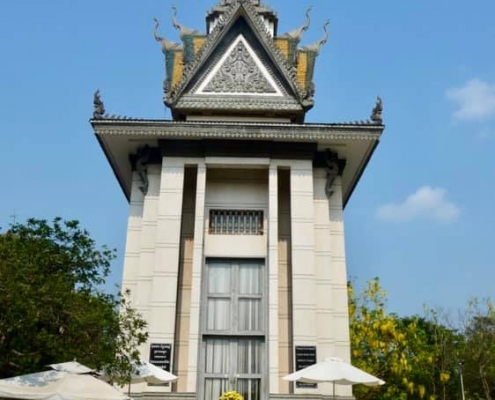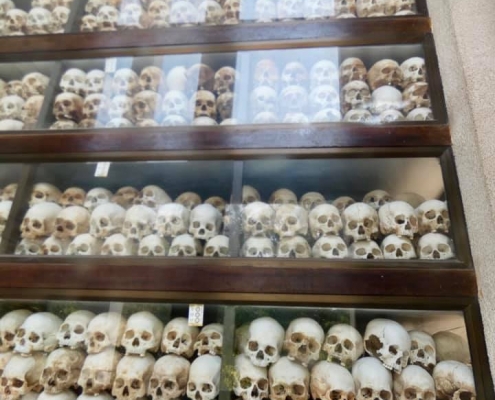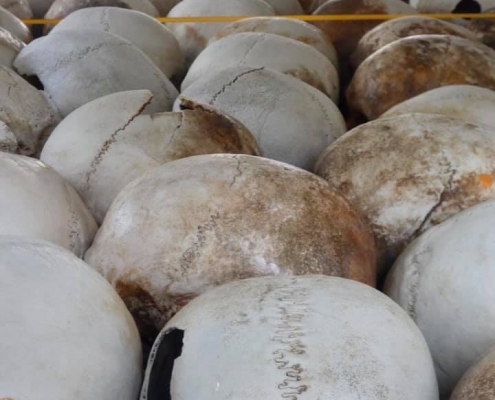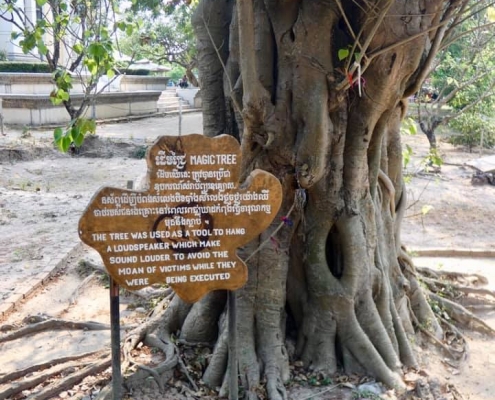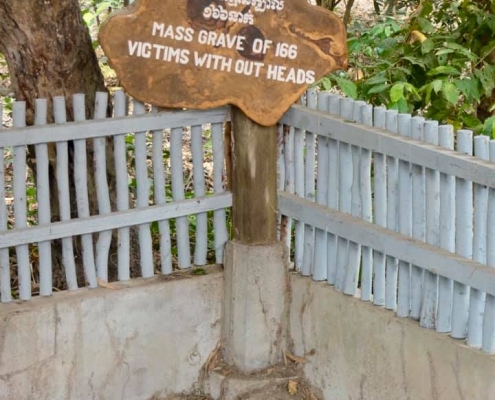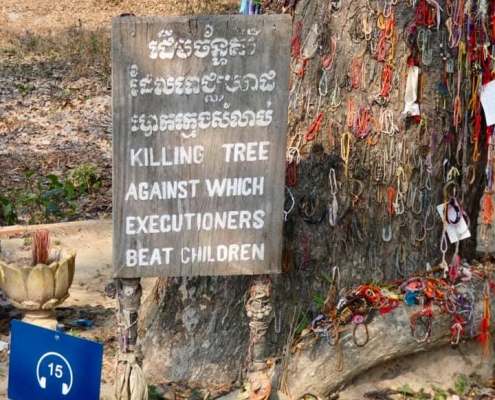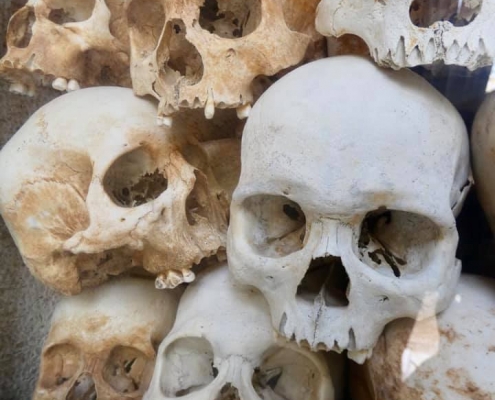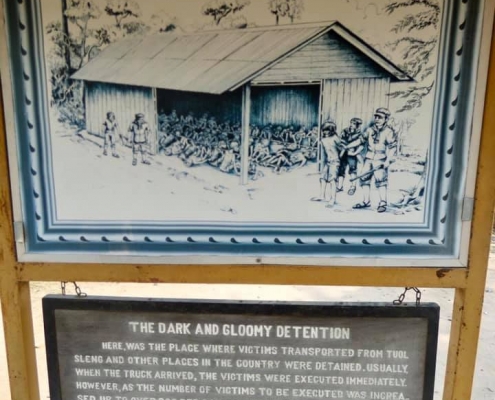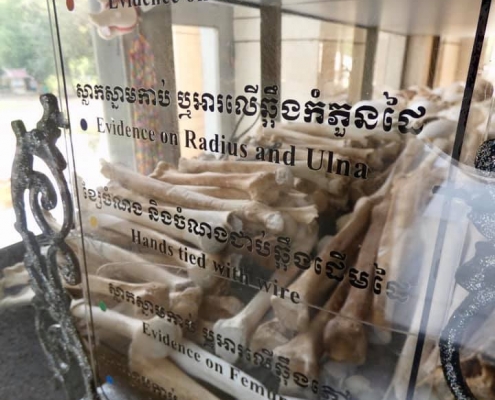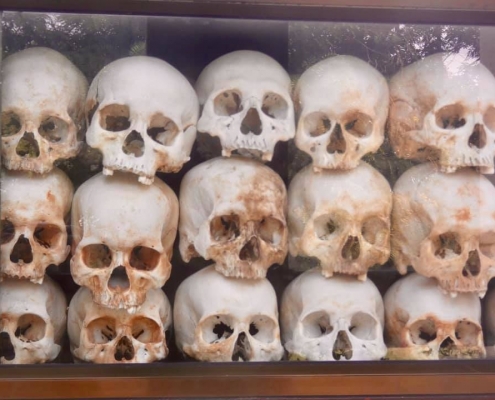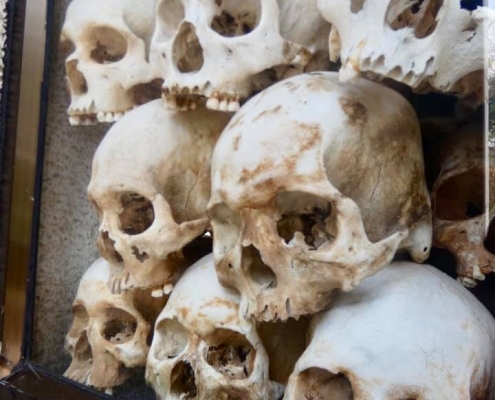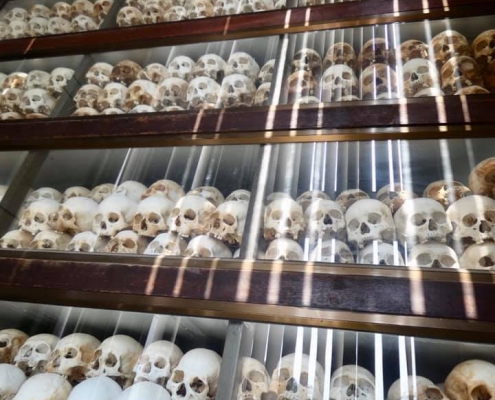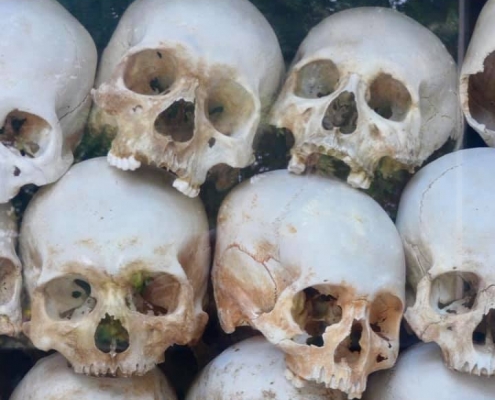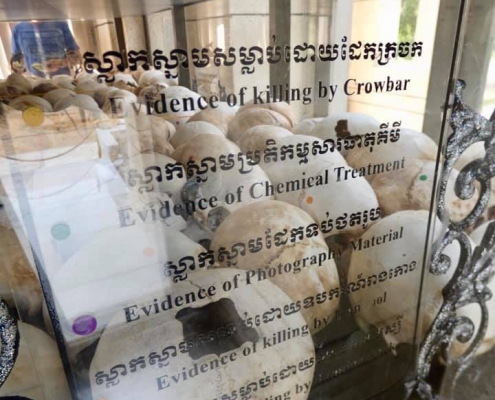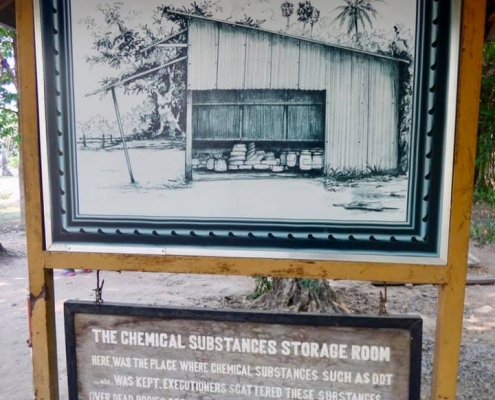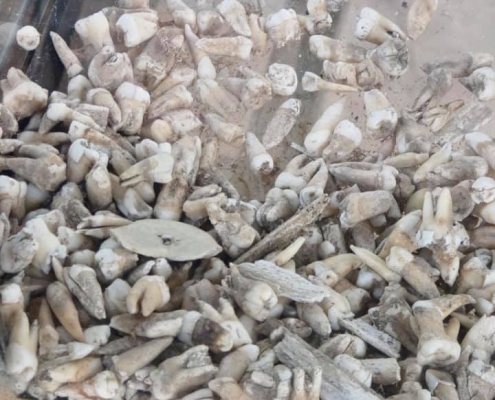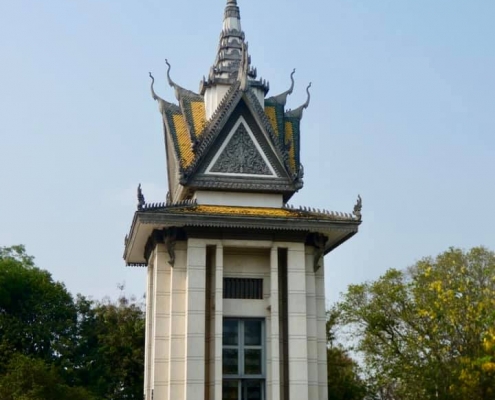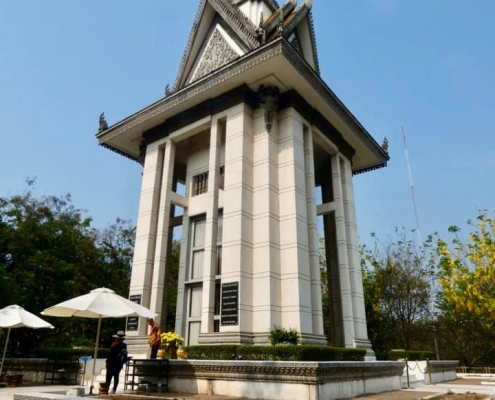Cambodia: Killing Fields
In 1975, Khmer Rouge guerillas aka the Communist Party of Kampuchea led by Pol Pot came to power in Cambodia with the tacit support of the communist Vietnam and despite the American bombing campaigns. Pol Pot, although educated in France, embraced the extremes of Stalin and Mao ultra-Communist ideology and proclaimed that only peasants have the right to built the agrarian society of Cambodia. That required elimination of urban population and intelligencia as classes altogether. The forced relocation of city dwellers into the rural area and extermination of anybody educated or opposing this insanity resulted in genocide on par with the Holocaust and Armenian genocide. Cambodia was completely locked behind iron curtain to protect from any foreign influences, schools were closed, hospitals shut down, banking and currency abolished (all trade was restricted to barter only and currency burned), and agriculture collectivized under the banner of self-sufficiency. Between 1-3 million people were executed or died in labor and relocation camps – professionals, intellectuals, former government official, all ethnic minorities, and “economic saboteurs” (traders and shopkeepers) were the first to go. Torture and medical experiments were rampant in the prison camps (most true doctors were killed first and the new “doctors” and prison guards were often 12-16 year-old kids amusing themselves) – cutting stomachs open and making people sleep in stagnant water (patients died), pumping coconut juice into the blood stream (patients died), tying together intestines of two separate living people to see if they grow together (patients died), drilling holes in live skulls (patients died), opening chests of live persons to see the heart (patients died), and so on. So back to the subject of this post – Killing Fields – a genocide memorial stands here surrounded by many mass graves. Nearly all 9,000 skulls that were dug out here are displayed in a glass stupa in the center of the memorial, a chilling and somber sight, and like many similar memorials around the globe – a painful must-see.


